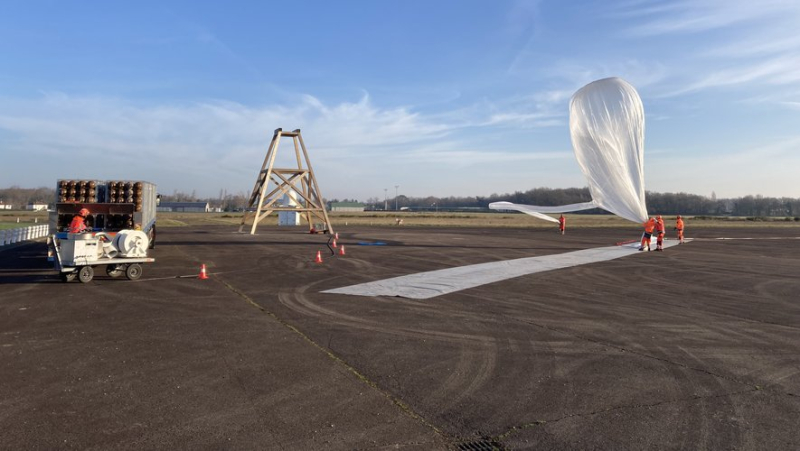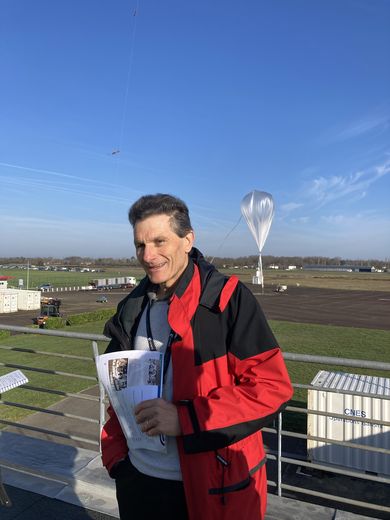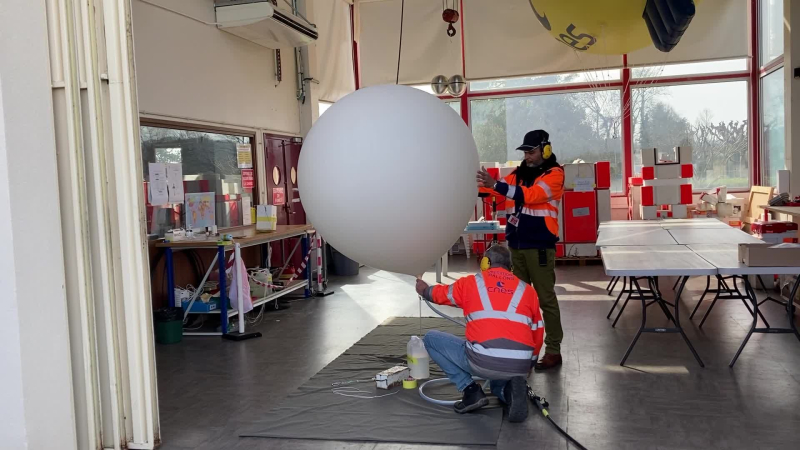CASE. With a ball, “we can do the simplest things in the world and the most complex”

Tests and revisions of procedures on the historic Cnes base, in Aire-sur-l'Adour. FREE NOON – Ollivier LE NY
Vincent Dubourg is deputy director at the National Center for Space Studies, in Toulouse, responsible for the balloons department. It details the scientific use made of it, within the framework of climate monitoring, while several countries are interested in its potential military applications.
What is the link between Cnes and balloons ?
Complementarity. Cnes made balloons at the same time as it began to make satellites, sounding rockets, then launchers: this is the family of vehicles capable of leaving the Earth.
For our part, we need to check the quality of our satellite data, for example. The CNRS needs balloons. But for infrastructure, engineering, qualification in a stratospheric environment, which is almost that of orbit, Cnes is best placed.

Vincent Dubourg, deputy director, head of the balloon department at Cnes, in Toulouse FREE NOON – Ollivier LE NY
The flight over the United States by a Chinese balloon last year highlighted a tool that we know little about…hellip;
The Chinese have “allowed” to raise awareness of the scientific balloon activity, which few countries master from start to finish. The Americans have the most resources. In Europe, I would claim to say that Cnes is number 1. The Swedes also operate large balloons, the Chinese, the Japanese, the Indians also operate them and we see that more and more are thinking about military applications.

What use do we make of it, classically ?
The families of balloons that we use are mainly dedicated to scientific missions. It is firstly the study of the atmosphere, in situ since the balloon allows measurements to be made in the stratosphere, a place which is not easily accessible . It is inaccessible to planes, crossed too quickly by sounding rockets and satellites cannot give the exact measurement, at a specific altitude, of the content of ozone, water vapor and greenhouse gases. The study of global warming is one of their main applications: the documentation of weather models and helping satellites to better map the composition of the atmosphere and its evolution.
Nîmes weather balloons
In fourteen locations, once or twice each day, Météo France automatically releases light expandable balloons (BLD), weighing around twenty grams, from a weather probe which will measure the orientation wind, humidity and atmospheric pressure. This data will feed its Arpege models – for the entire globe – and Arome, for France, from which the forecasters work. "These flights last approximately two hours. 1h30 of ascent then 45 minutes of descent for the probe, under parachute", describes Serge Cluzel, BLD mission leader at Cnes. He launches "around thirty per year"on behalf of the CNRS, in Aire-sur-Adour, with a more imposing instrument, which takes a “core” air.
In practice, these latex balloons expand as they gain altitude, in a ratio of one to ten. During the climb, those from Météo France will transmit the information to him at regular intervals, a GPS also allowing him to know the altitude of the reading and the direction of the wind. At a certain height, the balloon bursts under the effect of internal pressure and the probe wrapped in polystyrene slowly falls.
This has been the case since 1950 above the Nîmes-Courbessac aerodrome in Gard, one of the five metropolitan sites of the Institute of Meteorology – the other nine are overseas –, where every midday, we can observe a white sphere taking to the air.
In astronomy, they make it possible to bring instruments above the dense layers of the atmosphere which will look at the universe with a perception of its radiation practically as good as that of that we obtain with satellites, but at lower costs. We have the ability to observe the effect of radiation on cells, to release objects, the aerodynamics of which we will study during the descent. It’s very multiple, we can do the simplest things in the world and the most complex.
We see with Zephalto that new applications seem to be emerging.
The balloon is of interest to new entrants, who are asking themselves the question of using it to develop tourism or as a quasi-stationary observation platform above an area of interest. For military surveillance, borders, water monitoring, cartography or civil security. For forest fire detection, a persistent platform at 20 km altitude would make sense.

I subscribe to read more




